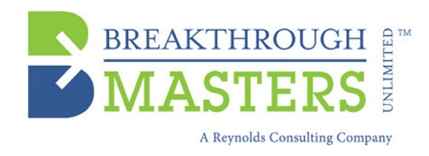
The company started as a private enterprise in 1946, became a partial ESOP in 1991 and a 100% ESOP in 2002. In the last six years they have tripled their share price. If you are thinking about becoming an ESOP or want to maximize the benefits of being one, read Kevin’s advice on engaging employees and overcoming challenges.
Q. Your company, Travel and Transport, was named 2015 ESOP Company of the Year by the ESOP Association. That is quite an honor. Tell us why your company was #1.
A. We are a 100% employee owned organization and have been since 2002. We currently employ 1,400 people in 44 states. I believe we were honored not because of one achievement but because we have embraced employee ownership as an important part of our strategy and are very purposeful in how we manage it. It is a strategic advantage to us to have our employees take pride of ownership in the company and we have done a lot to promote it. For example, during ESOP month we have a daily trivia contest that asks question about the ESOP. It could be what the acronym stands for (Employee Stock Ownership Plan) or what our last share price was. Anyone has a right to enter and every right answer gets put into a drawing and the winning name gets a pay out of share price. The employees really have fun with it. We see it as an educational process and an opportunity to get employees involved and interested.
Q. What are the biggest challenges that an ESOP organization faces?
A. Two challenges come to mind. The first is to make sure you own and run the ESOP and it doesn’t own and run you. For a lot of years after we formed the ESOP and even after it was 100% employee-owned, we didn’t dictate how to manage it—it dictated to us. There were basic mechanics like cash level, buying back shares and such but we didn’t have an overall goal or purpose on how we managed the plan. We celebrated employee ownership but we focused on its function. We needed to figure out what we wanted the ESOP to be. Clearly it is an employee benefit so we needed to think about it in terms of what we wanted it to deliver. In the mid 2000’s we worked with the Board to establish its role as a retirement benefit setting the goal that it will contribute 5% of total compensation accrued to employees on annual basis and be funded through a combination of the ESOP and 401k matching. The normal mechanics we had been implementing didn’t get us to the 5% goal so it caused us to rethink how we manage as an ESOP company.
The second key challenge is defining what you want employee ownership to mean. A lot of companies have an ESOP in place and they hand out the data each year but don’t spend time celebrating ownership; really communicating what it means to be an owner, and sharing important financial information. How do you bring employee ownership to life in the company? We established the (ECT) ESOP Communication Team seven or eight years ago. While some of our officers serve as mentors, and some as management leads, the front line runs it and decides how to communicate with employees. It gives employees more of a voice and as a result we do a better job of communicating what being an employee owner means. It is important to us that being an ESOP isn’t just a byproduct of an ownership transaction but an opportunity for us to unite as owners and all be on the same team.
Q. What are the benefits of being a purposeful ESOP?
A. About 1 ½ years ago we wanted to learn about how our employees and customers thought of us. We asked them to describe Travel and Transport in one word without giving them a list to choose from. Our customers #1 word was passion or passionate. We did the same exercise with employees and the #1 word they chose by a 3-to-1 margin was passion. We believe that if we take care of each other and the customer the rest will take care of itself.
Q. Running any company is a marathon and not a sprint. What are your current ESOP related challenges?
A. First, we are a fairly mature ESOP so our shares are about 90% allocated. We want to avoid having the “haves” and the “have nots”. It doesn’t sit well if part of the room is celebrating when stock price is announced and others don’t feel it impacts them. We will address this with the Board within the next year. We also face a “good” problem—which is that in the past six years our share price has tripled. It creates a lot of excitement and expectation of management. In addition, it creates the need to plan ahead for an aging workforce to ensure we can buy shares back at retirement. We have to carefully balance strategic investments, acquisitions and share buyback.
Q. Why did the company become an ESOP?
A. Here are three things I have learned along the way: 1) Don’t underestimate the significant investment in time and resources it takes to manage the change. Jump in all the way or don’t do it. 2) Know what you don’t know. In other words, acknowledge that there is a learning curve and set about to identify who the right people to learn from are. Actively participate in your local ESOP Association Chapter, talk to other ESOPs, and find the right experts. 3) Resolve the debate about whether you want an external trustee or not. We have an external trustee who weighs in when we make major decisions such as acquisitions. We figure if we are doing the things we should be we have nothing to worry about.
